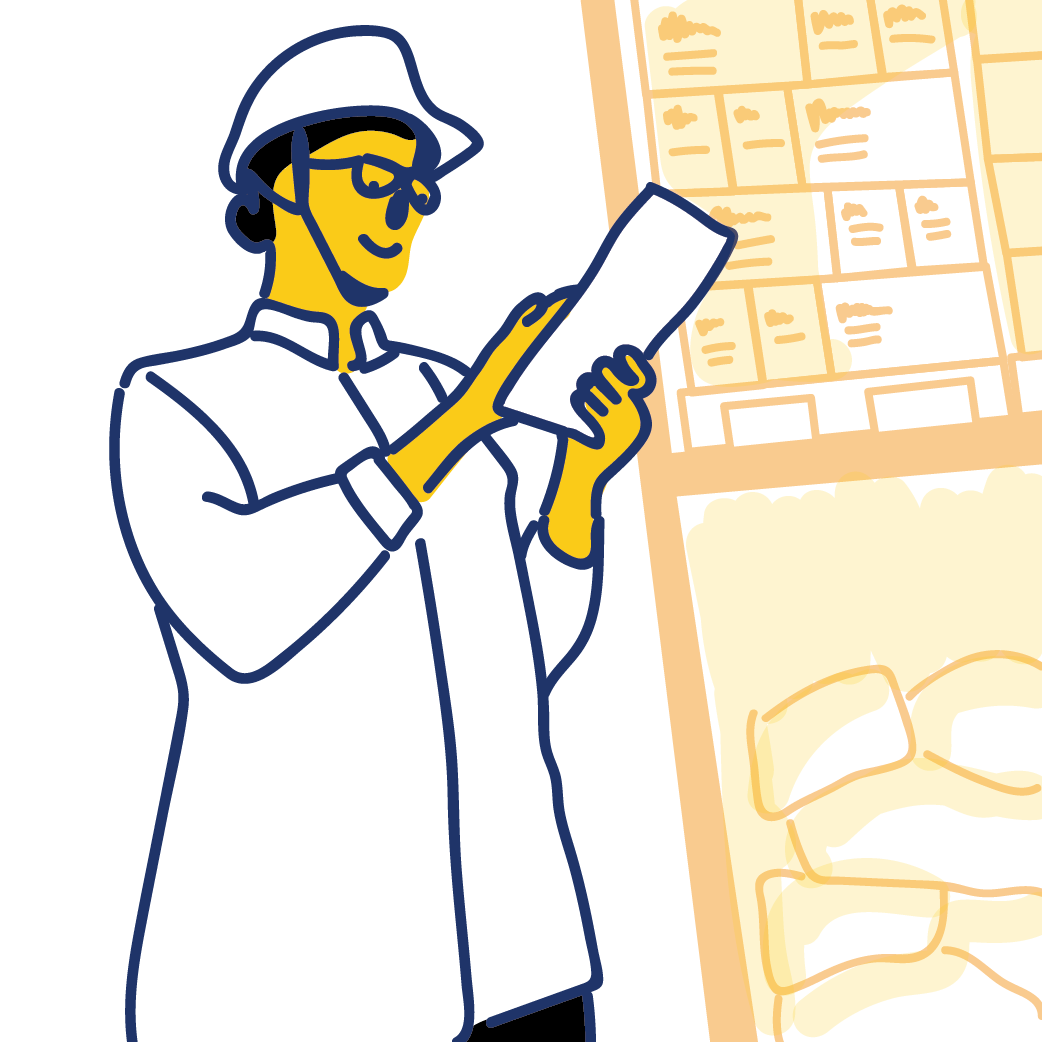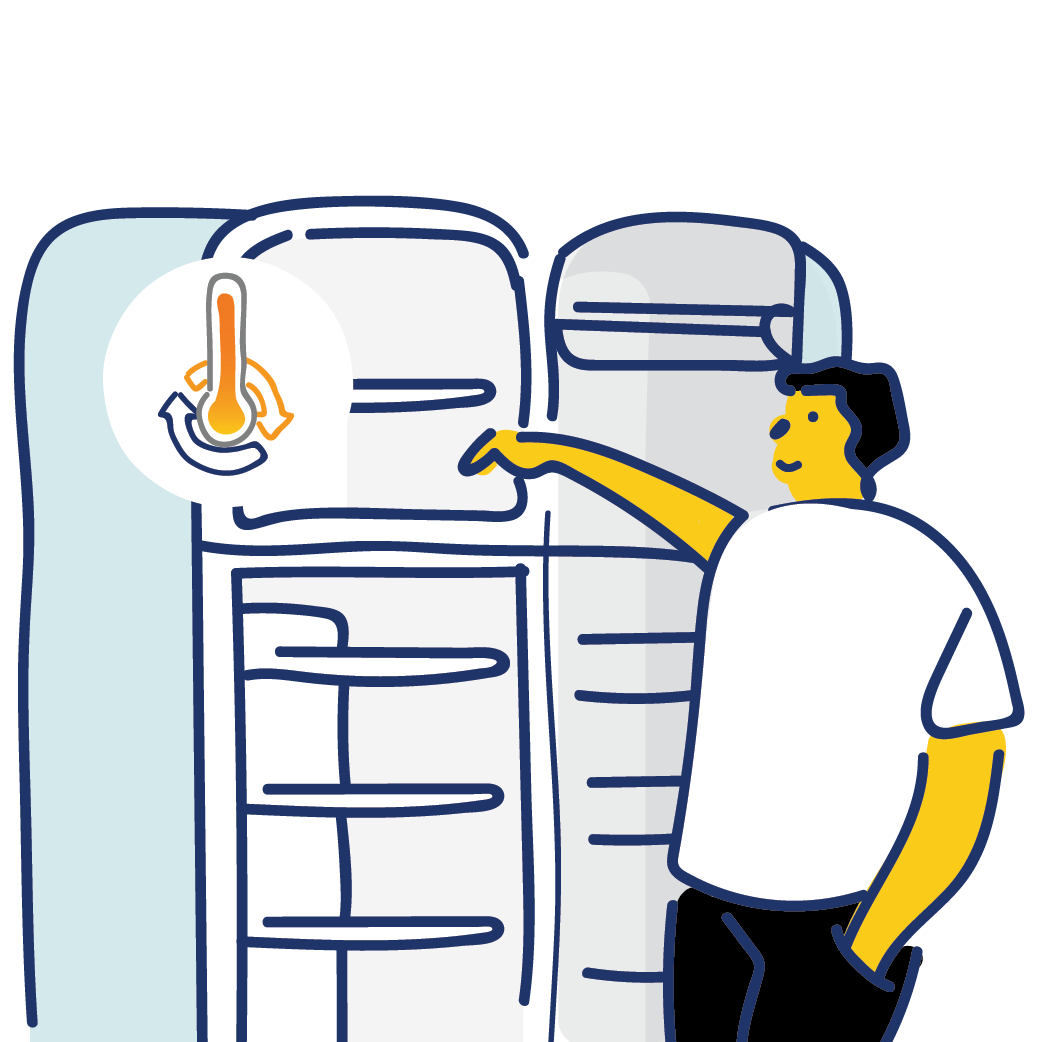FAQ Warehouses
Apr 26, 2024

Warehouses are vital components of the food supply chain, serving as intermediate storage spaces between food producers and consumers. Understanding the best practices for food safety in warehouses is essential to ensure that our food is safe, free from contamination, and maintains its freshness and nutritional value.
In this blog entry, we'll delve into frequently asked questions (FAQs) about warehouses and how they play a crucial role in maintaining the safety and quality of food products. Let's explore some common questions related to food safety in warehouses:
What are the critical factors when designing a food-safe warehouse?
Designing a food-safe warehouse involves careful planning and attention to various factors.
Some key considerations include:
- Layout and flow: Ensure a well-organized layout that minimizes the risk of cross-contamination by separating raw and ready-to-eat foods and providing designated areas for specific food categories.
- Temperature and humidity control: Maintain appropriate temperature and humidity levels to prevent microbial growth and food spoilage. Food items may require different storage conditions, so proper zoning is crucial.
- Hygiene and sanitation: Establish rigorous cleaning and sanitation schedules to keep the warehouse free from contaminants and pests. All personnel must adhere to strict hygiene practices to avoid introducing pathogens into the environment.
- Pest control: Implement effective pest management protocols to prevent infestations, as pests can cause extensive damage to food products and spread diseases.
- Packaging and labeling: Ensure that food products are appropriately packaged and labeled, indicating essential information like expiration dates, lot numbers, and allergen warnings.
What documentation and record-keeping are required to demonstrate compliance with food safety regulations?
To demonstrate compliance with food safety regulations, warehouses should maintain comprehensive documentation and record-keeping.
Some essential documentation includes:
- Temperature Logs: Regularly record temperature levels in storage areas to ensure that perishable foods are stored at the appropriate temperatures.
- Cleaning and Sanitation Records: Records of cleaning schedules, procedures, and the products used to maintain a hygienic environment.
- Supplier Documentation: Keeping records of the suppliers, product information, and any certifications related to the food products received in the warehouse.
- Stock Rotation Records: Records of the movement of goods to ensure that products with earlier expiration dates are used or sold before those with later dates.
- Training Records: Document staff training sessions on food safety protocols and best practices.
- Pest Control Records: Document pest control measures, including inspections and actions to address pest-related issues.
- Recall Procedures: Clearly defined recall procedures if a food safety issue requires removing products from the warehouse.
- HACCP Plan: If applicable, the written HACCP plan detailing the identified hazards, control measures, and monitoring procedures.

How do warehouses prevent cross-contamination between different food items?
Preventing cross-contamination is a top priority in food-safe warehouses.
Some preventive measures include:
- Physical separation: Utilize shelving and storage systems to create physical barriers between different food products, preventing direct contact and potential contamination.
- FIFO (First In, First Out) method: Adhere to the FIFO principle to ensure that older products are used or sold first, reducing the likelihood of spoilage and waste.
- Cleaning and sanitization: Regularly clean and sanitize storage areas, equipment, and utensils to remove any residues that could lead to cross-contamination.
- Employee training: Properly train all personnel on best practices for handling and storing different food items, emphasizing the significance of avoiding cross-contamination.
How can warehouses ensure food products remain at the proper temperature during storage?
Maintaining appropriate temperatures is crucial for preserving the quality and safety of food products.
Here's how warehouses can achieve this:
- Temperature monitoring: Install temperature monitoring systems to track and record temperatures continuously. This allows for prompt action in case of deviations from the recommended ranges.
- Refrigeration and freezer units: Use well-maintained refrigeration and freezer units to store perishable items at the right temperature.
- Insulation: Ensure that the warehouse is adequately insulated to prevent temperature fluctuations due to external factors.

What role does technology play in enhancing food safety in warehouses?
Technology can significantly improve food safety practices in warehouses.
Some ways technology is utilized include:
- Temperature monitoring systems: Automated temperature monitoring systems help track storage conditions continuously and alert staff in case of temperature deviations.
- Inventory management software: Technology-driven inventory systems enable precise tracking of product information, expiration dates, and batch numbers, facilitating efficient recalls if necessary.
- Traceability tools: Advanced traceability systems allow for the quick identification of the origin of products in the event of a food safety issue.
- Data analytics: Analyzing data collected through technology helps warehouses identify trends, potential risks, and areas for improvement in food safety protocols.
Conclusion
In conclusion, warehouses play a critical role in the food supply chain, and maintaining food safety within these facilities is essential for protecting public health and preserving the quality of food products. By adhering to proper storage practices, warehouses can prevent contamination, spoilage, and foodborne illnesses, ensuring that consumers receive safe, high-quality food.
If you are looking for advice on any food safety regulations related to warehouses, do not hesitate to contact us at GoHACCP with Experts, we will be happy to assist you. Also, our GoHACCP Compliance Software can assist you in using new technologies for your operation. Call us and book a Demo! Remember, a commitment to food safety is a shared responsibility that requires continuous education, vigilance, and cooperation across the industry.
Gerardo Fernández, Ph.D.in Biology.
Science Consultant at GoHACCP, dedicated to ensuring the safety and quality of food for consumers and manufacturers through scientific expertise and research.
Join our Food
Safety Community!
Stay ahead of the curve by exploring emerging
trends and technologies in food safety.

